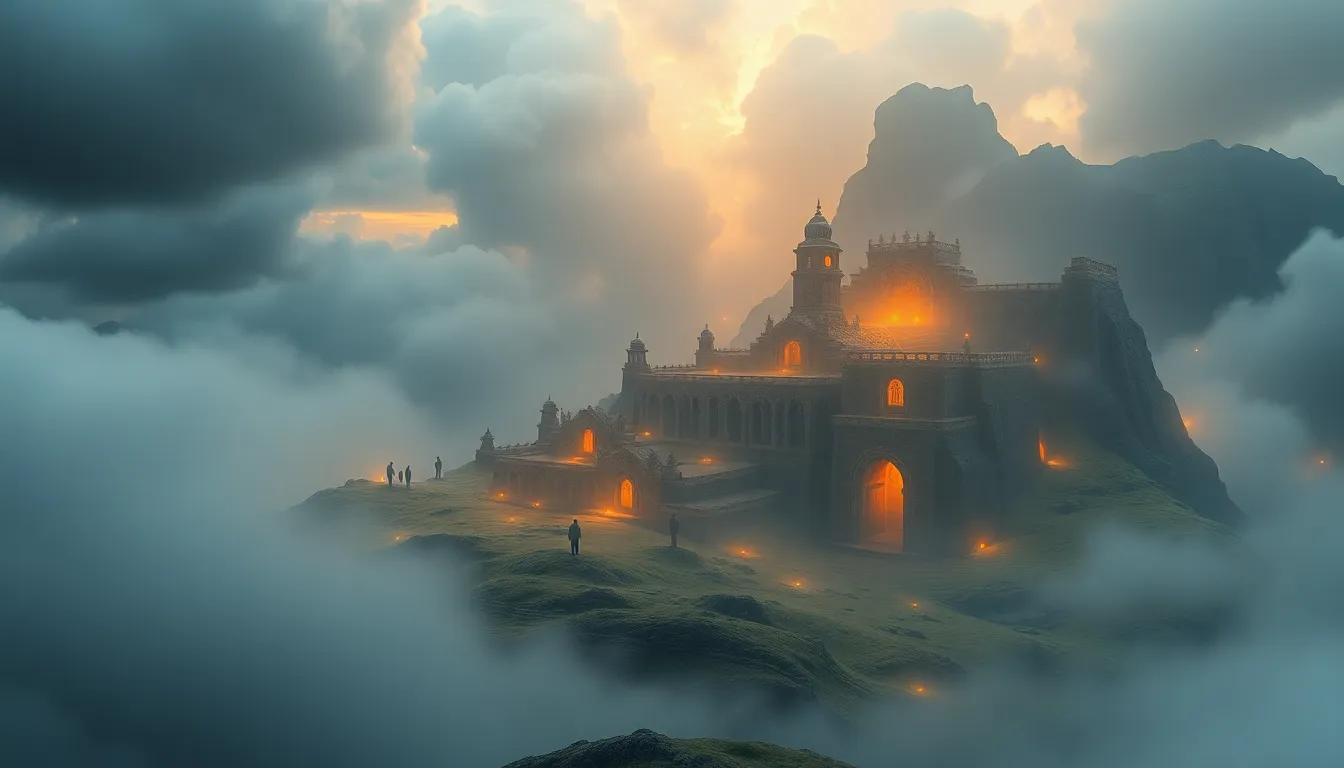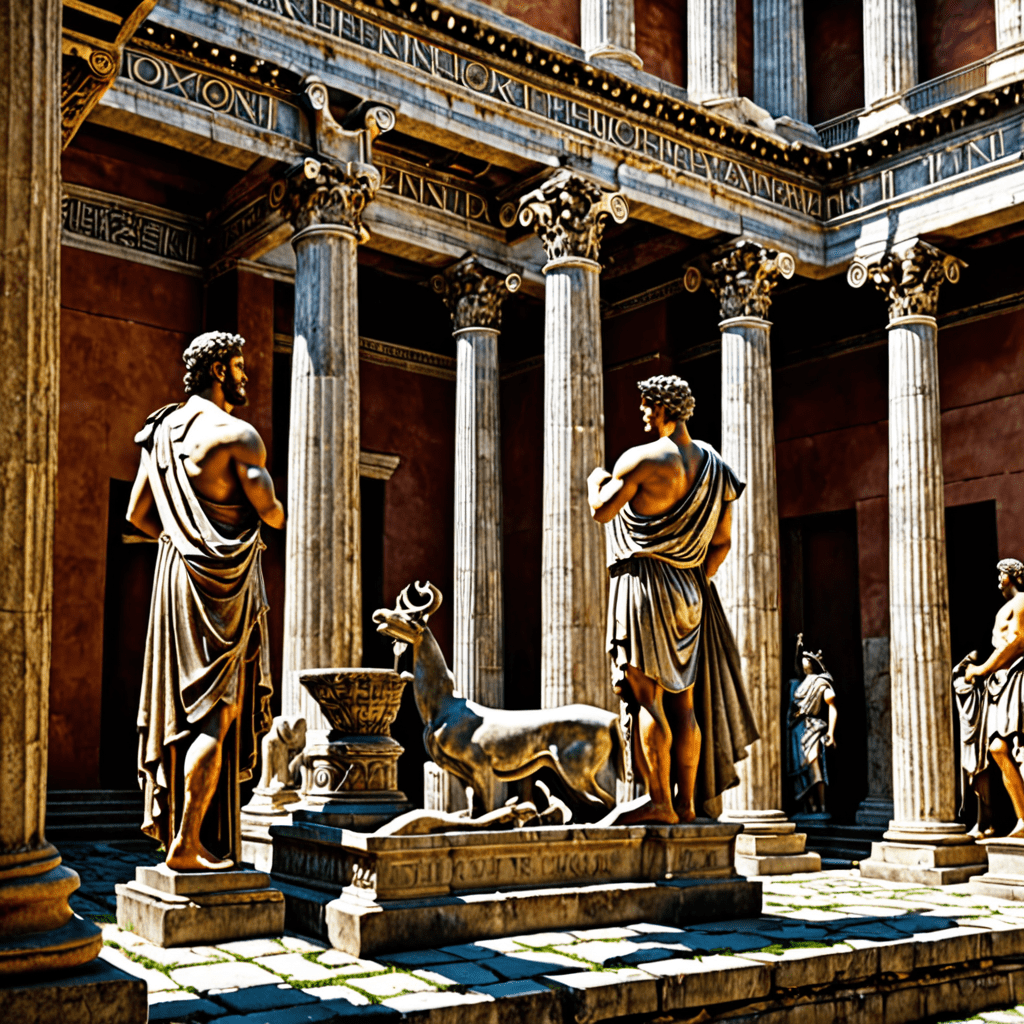Mythical Landscapes: The Geography of Sacred Places
1. Introduction to Mythical Landscapes
Mythical landscapes refer to the geographical settings that hold significant cultural, spiritual, or historical meaning in various societies. These landscapes are often the backdrops for stories and legends that shape the identities of communities. The importance of geography in shaping myths cannot be overstated; natural features like mountains, rivers, and forests frequently serve as the foundation upon which myths are built.
This article explores the sacred places across cultures, revealing how these landscapes contribute to the understanding of humanity’s relationship with the environment and the divine.
2. The Concept of Sacred Geography
Sacred geography is the study of spaces that are imbued with spiritual significance. Throughout history, civilizations have designated certain areas as sacred due to their natural beauty, unique features, or historical events associated with them. These places often serve as centers for worship, pilgrimage, and cultural gatherings.
For example, the ancient Greeks revered Mount Olympus as the home of the gods, while in India, the Ganges River is considered sacred due to its association with life and the cycle of rebirth. Geography plays a crucial role in shaping spiritual beliefs and practices, influencing everything from rituals to communal gatherings.
3. The Role of Nature in Mythical Landscapes
Natural elements are often symbolic in mythology, representing various deities, forces of nature, or aspects of human existence. Key natural features include:
- Mountains: Often seen as the abode of gods or as places of enlightenment.
- Rivers: Symbolizing life, purification, and the journey of the soul.
- Forests: Associated with mystery, the unknown, and the spiritual realm.
Case studies of iconic natural landmarks include:
- Mount Olympus: In Greek mythology, it is the home of the gods, representing divinity and power.
- The Nile River: In ancient Egyptian mythology, it was revered as a lifeline, associated with fertility and rebirth.
The interplay between environmental features and cultural narratives enriches the myths, creating a deep connection between people and their landscapes.
4. Sacred Sites Around the World
Notable sacred sites around the globe include:
- Stonehenge: A prehistoric monument in England, believed to have been used for rituals and astronomical observations.
- Machu Picchu: An ancient Incan city in Peru, revered for its spiritual significance and breathtaking location.
- Mecca: The holiest city in Islam, where millions gather annually for pilgrimage.
These sites are rich in cultural and religious significance, often attracting pilgrims and tourists alike. The impact of pilgrimage transforms these landscapes into living narratives of faith and devotion.
5. Mythical Landscapes in Indigenous Cultures
Indigenous cultures often have profound connections to their land, viewing it as a living entity with spiritual significance. For instance:
- Native American beliefs: Land is sacred, and many tribes have creation stories that are tied to specific landscapes.
- Aboriginal Australians: The Dreamtime stories illustrate the deep bond between the people and the land, with sacred sites marking significant cultural narratives.
Storytelling plays a crucial role in preserving these landscapes, ensuring that the spiritual and historical significance of the land is passed down through generations.
6. The Intersection of Mythology and Geography
Myths are profoundly influenced by geographical features. Many myths are tied to specific locations, such as:
- Atlantis: A legendary island mentioned by Plato, often associated with advanced civilization and catastrophe.
- Avalon: A mythical island in Arthurian legend, symbolizing mystery and the afterlife.
The role of geography in the evolution of these narratives demonstrates how landscapes inform cultural storytelling and belief systems.
7. Modern Interpretations of Sacred Landscapes
Contemporary cultures view and interact with mythical landscapes differently, often blending tradition with modernity. Preservation and conservation efforts are crucial for maintaining the integrity of these sites amid growing tourism pressures. Some key points include:
- The rise of eco-tourism, promoting sustainable practices.
- Community involvement in heritage conservation initiatives.
- The influence of technology in creating virtual experiences of sacred sites.
These factors contribute to the evolving perception of sacred places in modern society.
8. The Psychological and Emotional Connection to Sacred Places
Human attachment to sacred landscapes often evokes a profound psychological response. Visiting mythical sites can lead to transformative experiences that foster a sense of belonging and connection to something greater than oneself. Case studies indicate:
- Increased feelings of peace and fulfillment during pilgrimages.
- The impact of sacred rituals on mental health and well-being.
These emotional connections highlight the importance of sacred landscapes in personal and communal identity.
9. Challenges Facing Sacred Landscapes Today
Despite their significance, sacred landscapes face numerous challenges, including:
- Environmental threats: Climate change and urbanization threaten the integrity of sacred sites.
- Commodification: The commercialization of sacred spaces can undermine their spiritual significance.
- Advocacy efforts: Various organizations and communities are working to protect these landscapes from degradation.
Addressing these challenges is crucial for preserving the cultural heritage associated with these landscapes.
10. Conclusion: The Enduring Legacy of Mythical Landscapes
The significance of geography in mythology is profound, shaping narratives and spiritual beliefs across cultures. Sacred places continue to hold relevance in modern society, serving as reminders of our connection to the earth and the divine. As stewards of these landscapes, it is our responsibility to respect, preserve, and honor the mythical landscapes that enrich our collective human experience.



